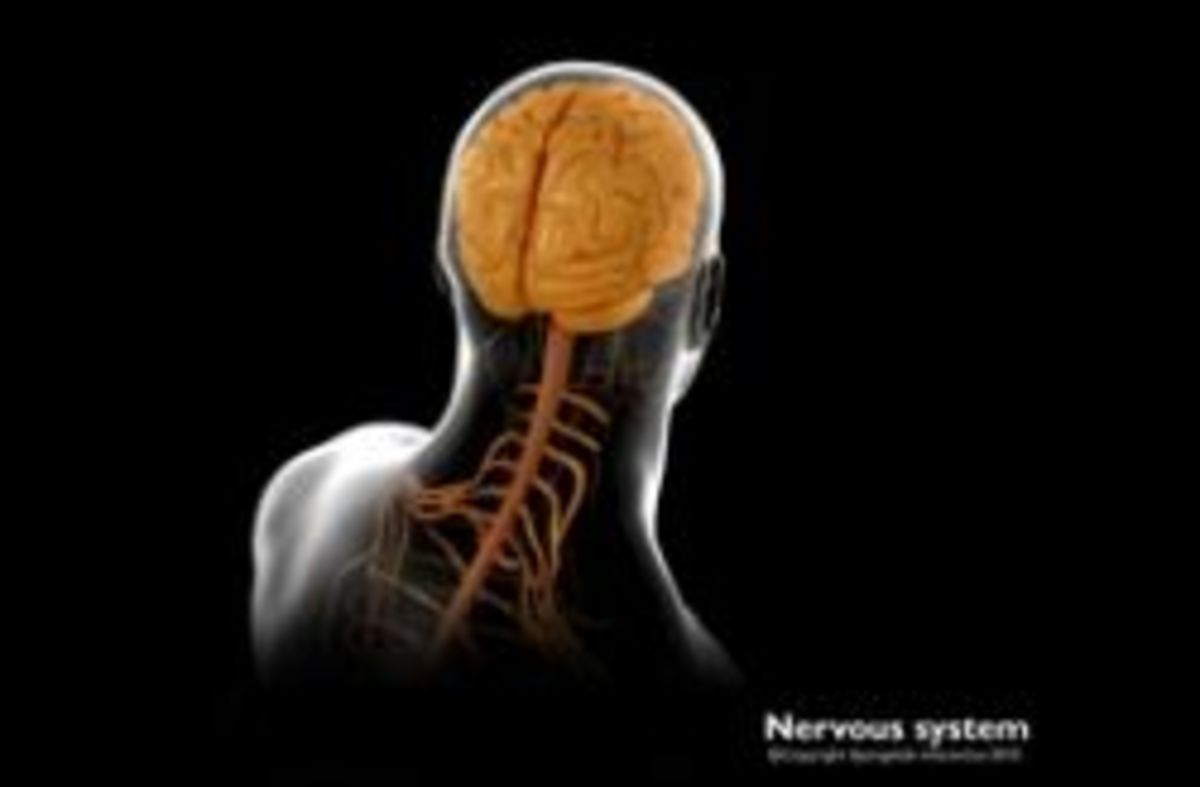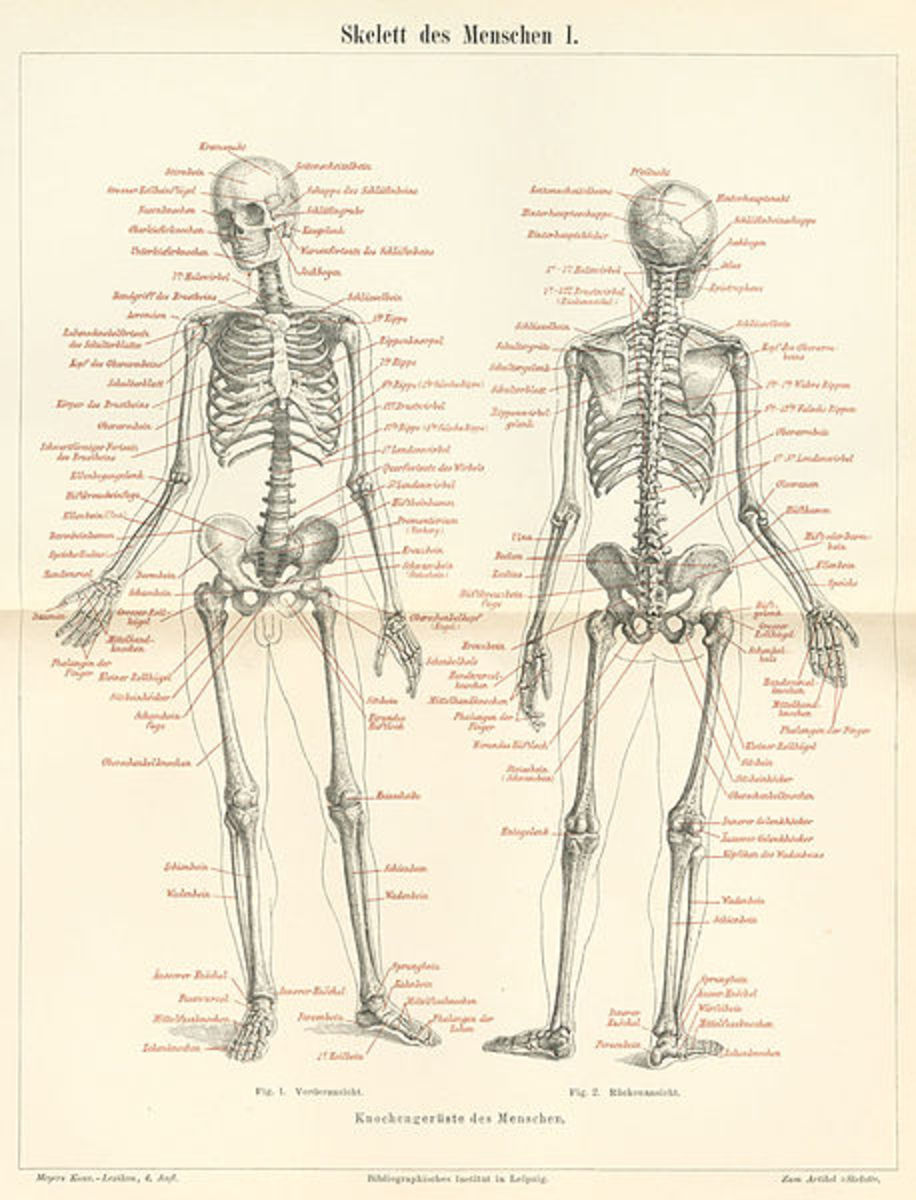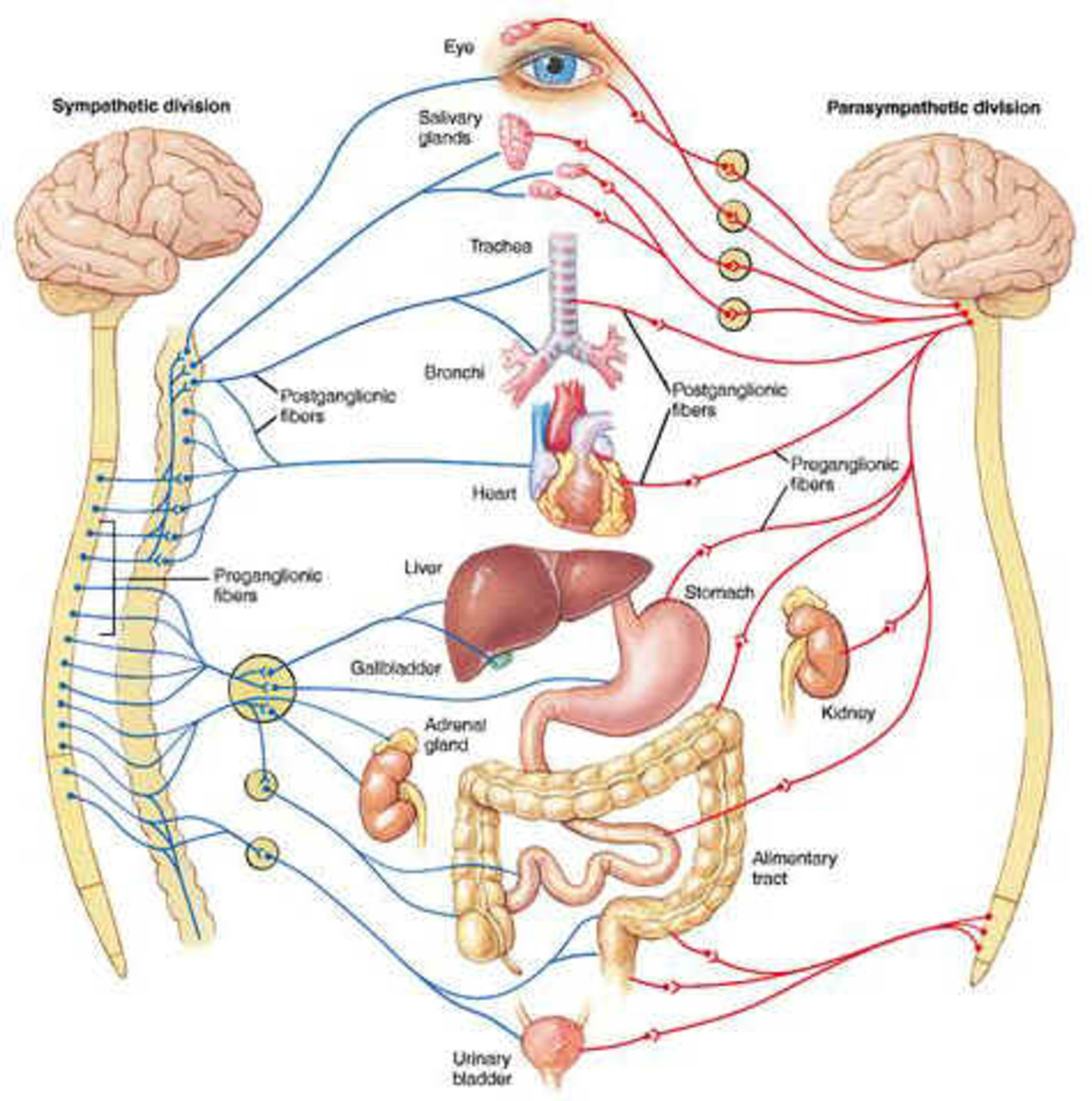Neuroscience Basics: The Nervous System - Part 1
Prologue
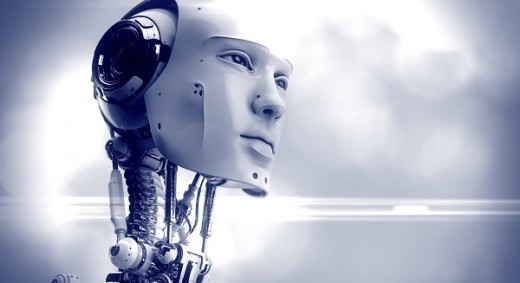
Before I begin my review of the nervous system, I feel the need to communicate the importance of why I'm taking the time to write this particular series of articles.
"Everything psychological is simultaneously biological" - Unknown
A big part of my career involves attempting to explain the nature of consciousness, behavior and mental processes. Most of us move through our lives unaware of the framework that makes our experiences possible. When the field of psychology was in its infancy in the late 19th and early 20th century, medical professionals didn't have the tools to properly examine how the body accounted for certain mental phenomena. Many assumed the mind existed separate from the body therefore abiding by an independent set of laws. As it turns out, many of these old-hat observations would come to be explained empirically. For an overview of these theories, visit an earlier featured article here: Psychology Basics: Modern & Historical Perspectives.
Today, we can account for a great majority of behavioral and mental processes by explaining in greater detail the degree to which biology influences our sensory experience of the world. Much of this has been illuminated by advances in micro-biology, genetic research, medicine, and neuroimaging technology within the last few decades. It's becoming more clear that components of the nervous system along with everything it touches is the basis for all experience. For some, this becomes a bitter pill to swallow because it forces us to view ourselves as mere machines subject to a deterministic set of laws. It's difficult to let go of the notion that we are completely free agents in this world but much of what we are has been crafted over millions of years of evolution to keep us safe and this comes with many limitations.
It may be comforting to know that, in spite of our advances, this particular machinery still remains more mysterious than some aspects of the cosmos. The brain is perhaps the least understood thing we are aware of. This is partly due to the fact that no one has yet to clearly identify the physical basis for consciousness itself. Consciousness - as far as we know - is an immutable presence of awareness. At this juncture, we can only observe the range of influences that affect consciousness...
Curious Case of Phineas Gage
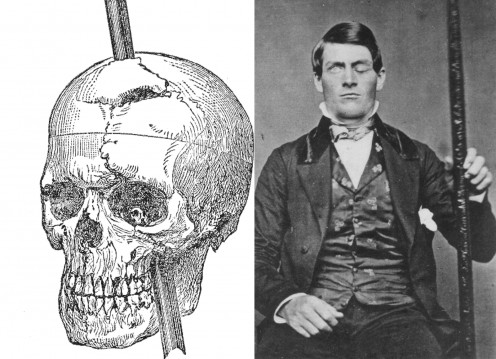
The year was 1848 in Cavendish, Vermont. A railroad foreman by the name Phineas Gage was pounding on an iron rod to pack explosive powder into a hole on a stretch of railroad tracks. Before Phineas knew what happened, the powder detonated propelling the 43 inch long, 13 pound rod upward through his left eye socket and out the top of his skull. Miraculously, he survived though permanently blinded by the accident.
It wasn't until later that other symptoms became apparent. John Martin Harlow, the physician who attended to Phineas, reported dramatic changes in his personality. Harlow wrote that the balance dissipated between his “intellectual faculties and animal propensities”. In short, his friends and family found him to be intolerably crude and aggressive.
Phineas became the first documented neuroscientific case pointing to a relationship between the body and who we are. But before we jump into the more captivating aspects of neuropsychology, we have to sort a few things out first. What does it mean to live in a body? Who or what is in control? How do we experience anything at all? All questions will be answered in due time....
Central Nervous System (CNS)
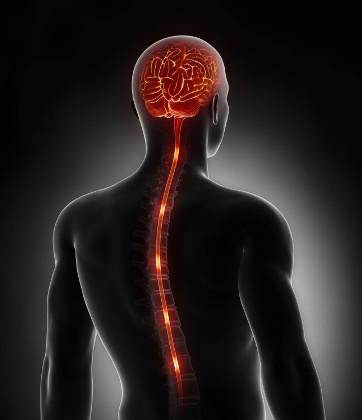
CNS
The central nervous system is comprised of two parts: The brain and spinal cord situated within the skull and vertebral canal of the spine. That's the easy part.
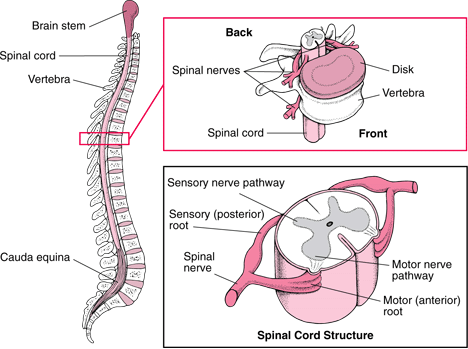
Spinal Cord
The spinal cord contains 31 pairs of spinal nerves that connect to every nerve ending in the body. The inner core of the spinal cord is made up of "gray matter" composed of neurons, glial cells, and interneurons. The outer core is made up of "white matter" composed of myelinated axons to facilitate nerve signals. Surrounding the spinal cord are layers of special tissue called "meninges", fat and bone structure to keep it well protected.
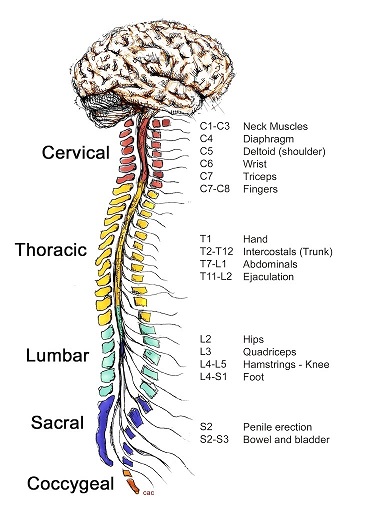
The CNS carries out the majority of functions in the body. Much like a computer, the brain processes information pertaining to thought, senses and interpretation of the environment. The spinal cord is comprised of special nerves that relay information to and from the brain for organ function and bodily movement. Overall, the CNS governs voluntary/involuntary movement, cognition, speech, and emotions.
Severe damage along any part of the CNS can result in bodily paralysis, mental impairment, loss of consciousness and death. Or if you're lucky like Phineas Gage, you may only annoy your friends with mood swings.
Notice in the image above, different locations along the spinal cord correspond to more specific bodily functions. The processes that extend outward from the spinal cord is part of the more complex structure of the peripheral nervous system (PNS).
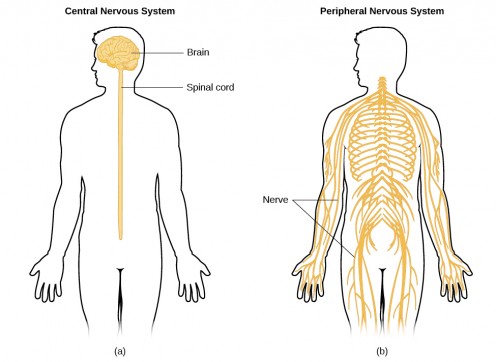
Peripheral Nervous System (PNS)
In an earlier article, I briefly described the structure and function of nerve cells and neurotransmitters. I strongly recommend reviewing that before continuing.
The majority of the PNS consists of sensory and motor neurons. In figure 1, you'll notice that information travels bidirectionally using what we call efferent and afferent pathways between the PNS and CNS.
Somatic Nervous System
You'll soon discover that within any system are even more systems with different functions. Voluntary muscle movement that is governed through conscious brain activity occurs through a subset of the PNS called the somatic nervous system.
Example: When you press the tip of your finger against an object, that pressure is detected by small receptor sites located in the shallow layers of skin and converted into information [electrical impulses] which is then carried [by sensory neurons] along afferent pathways toward the spinal cord. From the spinal cord, the message is then relayed to the brain so it can decide whether or not a signal will be sent back through efferent pathways connecting to nerve bundles [motor neurons] embedded in muscle tissue for further action. Next time you're holding a glass of water, remember that there is continuous feedback along these pathways that keep you from dropping it on the ground.
Sometimes intensity of stimuli determines whether or not information bypasses the long journey to the brain in what's called a "reflex arc". Next time you touch a hot surface you'll notice that you don't have to think very long before pulling your limbs away from the source. *
Autonomic Nervous System (ANS)
Autonomic pathways within the PNS maintain regular exchange of information with organs and blood vessels thus allowing our heart to pump, glands to secrete hormones, colon to digest food, and lungs to breathe (figure 2). All of which are involuntary, though you may override the breathing circuit at any time. I wouldn't recommend it much outside physical exercise.
The PNS and ANS is subdivided into, yes, two more systems: The Sympathetic and Parasympathetic nervous system...
Figure 1 - Efferent & Afferent Pathways
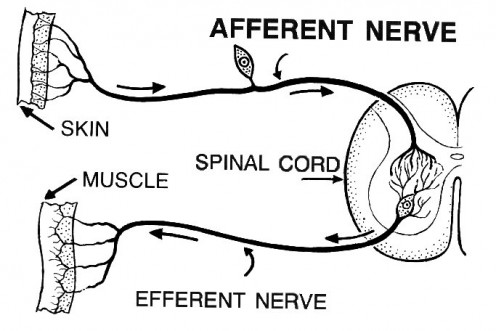
Figure 2 - Comparison (Click to Zoom)
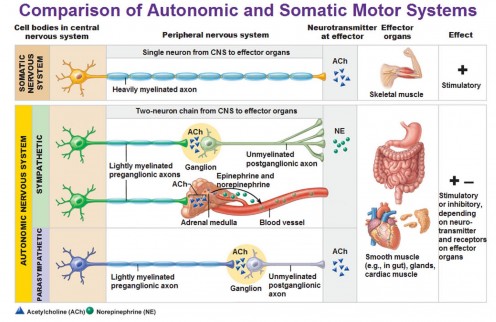
Sympathetic Nervous System (SNS) - Fight or Flight
This is where things get complicated. The SNS has a very sensitive relationship with the ANS and CNS. Its function varies between maintaining homeostasis and activating the fight or flight response.
Homeostatic Functions
- Perspiration for heat dissipation
- Glucolysis (breaking down sugar for usable energy)
- Blood pressure regulation
- Hormone secretion. Ex. Anti-diuretic Hormone (ADH) for water conservation
- Metabolizing fat
Stress Response (Fight or Flight)
This occurs when we encounter perceived threats or experience long periods of negative emotion thereby triggering a cascade of autonomic responses throughout the body (Figure 3):
- Catecholamines released (adrenaline/noradrenaline)
- Increased heart rate
- Circulation is diverted away from digestion to muscle tissue
- Rapid glucoysis for available energy
- Pupil dilation for more narrow focus
While chronic stress can lead to a number of health problems, this automatic process has been vital to our survival in the face of predators and life threatening circumstances.
Structure
The SNS is divided between two sets of neurons from within the spinal cord and ganglia (collection of nerves) residing outside the CNS.
The first is a group of cell bodies within the thoracic and lumbar regions of the spinal column indicated in figure 3 (T1 -12 and below). These neurons release a neurotransmitter called acetylcholine which stimulates activity of post-synaptic neurons along various peripheral pathways including the adrenal medulla located above the kidneys. The adrenal medulla secretes different chemicals including epinephrine and norepinephrine that increase skeletal muscle contraction and heart rate.
Figure 3 - Sympathetic Activation
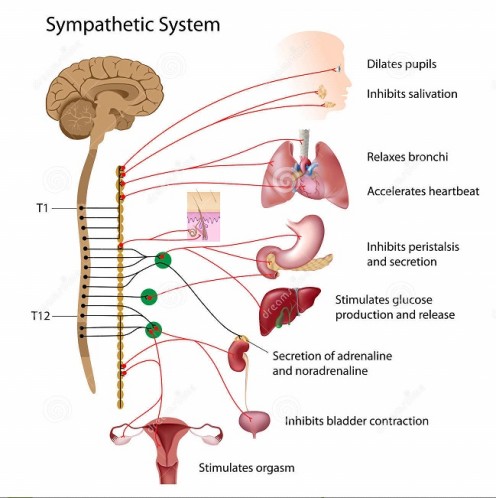
Parasympathetic Nervous System (PSNS)
To put it plainly, the PSNS has precisely the opposite function of the SNS. It down-regulates stimulation of specific organs, conserves energy and brings the body back into a relaxed state. A good way to remember the function of the PSNS is the handy dandy acronym SLUDD.
S - Salivation
L - Lacrimation (tears)
U - Urination
D - Digestion
D - Defecation
All of these bodily functions are inhibited during sympathetic activation but the PSNS helps bring them back online and returns the body to homeostasis. (figure 4) The structure of this system is identical to the SNS; the only difference being a neurochemical sleight of hand along different pathways.
Figure 4 - Parasympathetic Activation - Rest & Digest
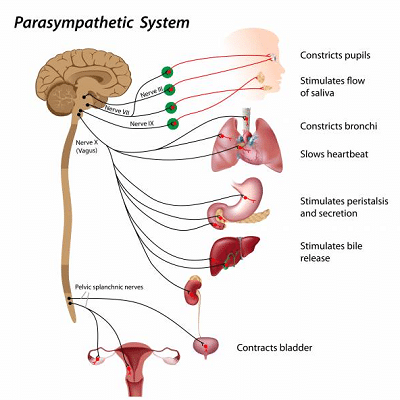
Interlude
If you think there's more to the story about the nervous system, you'd be right. It's an inexhaustible universe even from the perspective of our best and brightest. My goal here was to merely pass over the basic properties of these systems so you have a better idea exactly how much is happening inside of you at any given time.
You might also be wondering why I didn't begin by talking about the brain. As we'll learn in the next article, much of our brain was developed later during our evolution as a species. The basic framework of a nervous system is ancient and is actually what allowed us to first perceive the world. If it weren't for the involuntary process of digestion, we wouldn't absorb nutrients and metabolize food for energy to move about in the environment or stay awake. If it weren't for the function of breathing we couldn't vacuum up airborne molecules to detect odor. If it weren't the millions of sensory nerves across our body we could not feel physical objects or taste our favorite foods. All of these "boring" biological processes give us our reality.
We often like to think of ourselves as resting just behind our eyes. But we are so much more than that. After decades of trial and error on part of cybernetic researchers, constructing a computer model of a brain proved much more difficult than expected. It eventually required constructing a "body" in order for AI systems to be able to "see" the world according to how we would define it for ourselves. Needless to say, there's still much work to be done for both engineers and biologists.
In the next article, we'll finally talk about the brain in all its frustratingly complex glory.
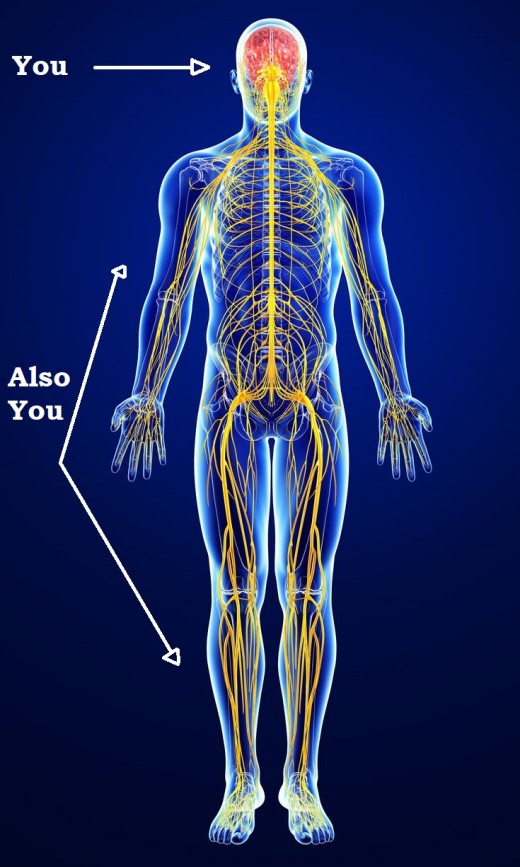
Resources
Biology Dictionary (2017) Sympathetic Nervous System. Retrieved from https://biologydictionary.net/sympathetic-nervous-system/
Chawla, J. (2016) Peripheral Nervous System Anatomy. Retrieved from https://emedicine.medscape.com/article/1948687-overview
Christopher & Dana Reeve Foundation (2017) How the spinal cord works. Retrieved from https://www.christopherreeve.org/living-with-paralysis/health/how-the-spinal-cord-works
Lumen (No Date) Functions of the Autonomic Nervous System. Retrieved from https://courses.lumenlearning.com/boundless-ap/chapter/functions-of-the-autonomic-nervous-system/
McCorry, L. (2007) Physiology of the Autonomic Nervous System. NCBI. Retrieved from https://www.ncbi.nlm.nih.gov/pmc/articles/PMC1959222/
PubMed Health (2016) Central Nervous System. Retrieved from https://www.ncbi.nlm.nih.gov/pubmedhealth/PMHT0024762/
Twomey, S. (2010) Phineas Gage: Neuroscience's Most Famous Patient. Smithsonian. Retrieved from https://www.smithsonianmag.com/history/phineas-gage-neurosciences-most-famous-patient-11390067/
Poll
Was this article helpful?
© 2017 Jessie Watson

